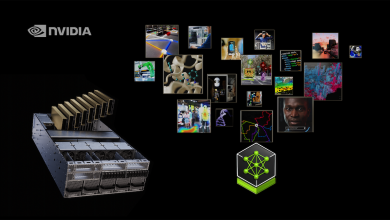Generative AI: From Hype to Enterprise Transformation – Predictions 2025

By Ed Anuff, CPO, DataStax
Generative AI is no longer just a futuristic concept; it is transforming how businesses innovate and interact with customers. With its potential to drive operational efficiency and deliver unparalleled user experiences, organisations are rapidly reevaluating their strategies to integrate this game-changing technology.
AI Budget Allocation
In the overall IT budget, AI will be a significant portion of any new funds allocated. In terms of use cases, the largest share of the Gen AI budget is likely to support applications such as implementing chatbots and getting data from knowledge bases into other conversational content platforms. The goal will be to enhance user interaction, streamline access, and improve support through conversational AI interfaces.
The Current State of Generative AI in Production
Generative AI is still in its early stages of adoption, with most businesses yet to launch production-grade applications. While tools like ChatGPT demonstrate potential, widespread deployment for business-specific use cases hasn’t occurred. The delay mirrors previous technological waves, where enterprises took between two and four years to integrate new innovations.
By 2025, we should see companies launch and make good on their promises around AI, both internally and to the market. Those that do this successfully will see significant impact.
Criticism of the “More Than a Chatbot” Narrative
The “more than a chatbot” narrative is seen as premature because most organisations haven’t successfully implemented even basic chatbot systems that deliver on their promises to users. Many IT leaders and vendors who advocate for more advanced applications often lack experience with actual chatbot deployments. Getting the right foundations in place is essential, and that work on GenAI projects should not be devalued in the rush to hype the next big thing in AI.
Comparing Generative AI Adoption to Mobile and Social Technological Shifts
Generative AI adoption follows a similar trajectory to innovations like mobile apps and social media. Apple launched the App Store in 2008, and it took until 2009 for Uber and 2010 for Instagram to launch. These apps disrupted industries. Mobile enabled Spotify to disrupt music, and Airbnb and Uber disrupted hospitality and transportation. It took longer for traditional enterprises to feel comfortable with mobile, yet now it is essential. GenAI is following the same path, and we are now in that two-year timeframe. We should see strong launches in 2025 and beyond.
When ChatGPT launched, it was impressive to many. But Gen AI needed tools around it—like vector data embeddings, vector search, and integrations—to become something enterprises could use at scale. Those tools are now in place, and 2025 should be the year when deployments start coming through.
Challenges in Deploying Generative AI in Enterprises
There are four key problems: inertia in adoption, lack of expertise, getting over the hype, and having the right infrastructure in place.
Many enterprises are slow to experiment and deploy new technologies, even when they are production-ready. Gen AI is still developing, so many companies adopt a wait-and-see mindset. But Gen AI works best when you use your own data with it, so you can’t copy another company’s approach and expect the same results.
Additionally, finding the right people to manage and scale AI deployments is challenging, given the scarcity of expertise. The hype around Gen AI doesn’t help either, as science fiction-inspired expectations lead to delays in practical implementations.
To be ready for Gen AI, businesses need better tooling, architecture, and observability systems to integrate AI solutions effectively. Large language models are only part of the equation. Businesses must have the right data, tools, and information for successful deployment.
Industries Poised to Benefit Most from Generative AI
Industries relying on engagement—like customer service, retail, and support—are poised to see the most immediate benefits. These tools can also alleviate cognitive burnout in specialised fields like medical imaging, where AI can assist in reviewing scans or drug discovery. However, success depends on overcoming bottlenecks.
Venture Capital’s Role and Missteps in Generative AI Funding
Venture capital has played a significant role in funding generative AI, but many firms overemphasised investments in model development rather than infrastructure. The true value lies in software applications, tooling, and orchestration.
This funding imbalance will lead to mergers, acquisitions, and financial opportunities for companies with strong market positions but insufficient funding. VCs must understand enterprise buying patterns to maximise long-term returns.
Predictions for Generative AI Adoption in 2025
2025 will be the year we transition from hype to widespread production. AI-powered chat services and embedded applications will help build products faster, fix bugs, and improve user experiences. Generative AI will also reduce cognitive burdens, enabling faster progress in addressing global challenges like hunger and disease.
Research will continue advancing rapidly, introducing new concepts while businesses work to deploy existing technologies like chatbots. These developments will expand Gen AI’s capabilities further.
Relevance of Chatbot Use Cases in 2024 and Beyond
Although conversational interfaces (chatbots) might seem like “last year’s use case,” most organisations haven’t implemented and deployed one effectively. Developing scalable chatbot solutions remains critical for customer interactions, internal support, and field operations.
The Long-Term Outlook for Generative AI in Enterprises
Generative AI is set to become the fourth major wave of digital engagement after web, social, and mobile. Over the next few years, it will transition from experimental technology to a core business capability.
Companies that embrace generative AI will gain a competitive edge. Beyond chatbots, Gen AI will act as a life-enhancing assistant, helping executives make better decisions, balancing work-life complexities, and providing data-driven insights.
Imagine an executive asking their AI assistant about a dipping KPI. The assistant analyses data, proposes hypotheses, and tests solutions—revolutionising decision-making and business efficiency. This is the transformative potential generative AI offers for enterprises.




